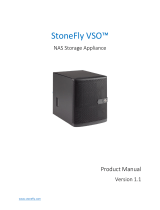
Chapter 1: About Your System.......................................................................................................5
Introduction...........................................................................................................................................................................5
Front-Panel Features and Indicators.............................................................................................................................. 5
Back-Panel Features and Indicators................................................................................................................................7
Physical-Drive Indicator Patterns....................................................................................................................................8
Power Supply and Cooling Fan Features....................................................................................................................... 8
Power Indicator Codes and Features............................................................................................................................. 9
Related Documentation......................................................................................................................................................9
Chapter 2: Controller Modules......................................................................................................11
RAID Controller Modules...................................................................................................................................................11
RAID Controller Module Connectors And Features....................................................................................................11
RAID Controller Module—Additional Features........................................................................................................... 12
Battery Backup Unit.................................................................................................................................................... 12
Storage Array Thermal Shutdown............................................................................................................................13
System Password Reset.............................................................................................................................................13
Cache Functions and Features....................................................................................................................................... 13
Cache Mirroring............................................................................................................................................................13
Write-Back Cache........................................................................................................................................................13
Write-Through Cache..................................................................................................................................................13
Chapter 3: Installing Array Components.......................................................................................15
Recommended Tools.........................................................................................................................................................15
Front Bezel (Optional)......................................................................................................................................................15
Removing the Front Bezel......................................................................................................................................... 15
Installing the Front Bezel............................................................................................................................................16
Physical Drives....................................................................................................................................................................16
SAFETY Models AMT E03J and E04J.....................................................................................................................16
Removing a 2.5 Inch Physical-Drive Blank.............................................................................................................16
Installing a 2.5 Inch Physical-Drive Blank...............................................................................................................16
Removing a 3.5 Inch Physical-Drive Blank............................................................................................................. 17
Installing a 3.5 Inch Physical-Drive Blank............................................................................................................... 17
Removing a Hot-Swap Physical Drive.....................................................................................................................17
Installing a Hot-Swap Physical Drive.......................................................................................................................18
Removing a Physical Drive From a Physical-Drive Carrier.................................................................................18
Installing a Physical Drive Into a Physical-Drive Carrier.....................................................................................20
RAID Controller Module ..................................................................................................................................................20
Removing a RAID Controller Module Blank...........................................................................................................20
Installing a RAID Controller Module Blank..............................................................................................................21
Removing a RAID Controller Module ......................................................................................................................21
Installing a RAID Controller Module ........................................................................................................................ 21
Opening the RAID Controller Module .................................................................................................................... 22
Closing the RAID Controller Module....................................................................................................................... 22
RAID Controller Module Backup Battery Unit ...........................................................................................................23
Contents
Contents 3




















